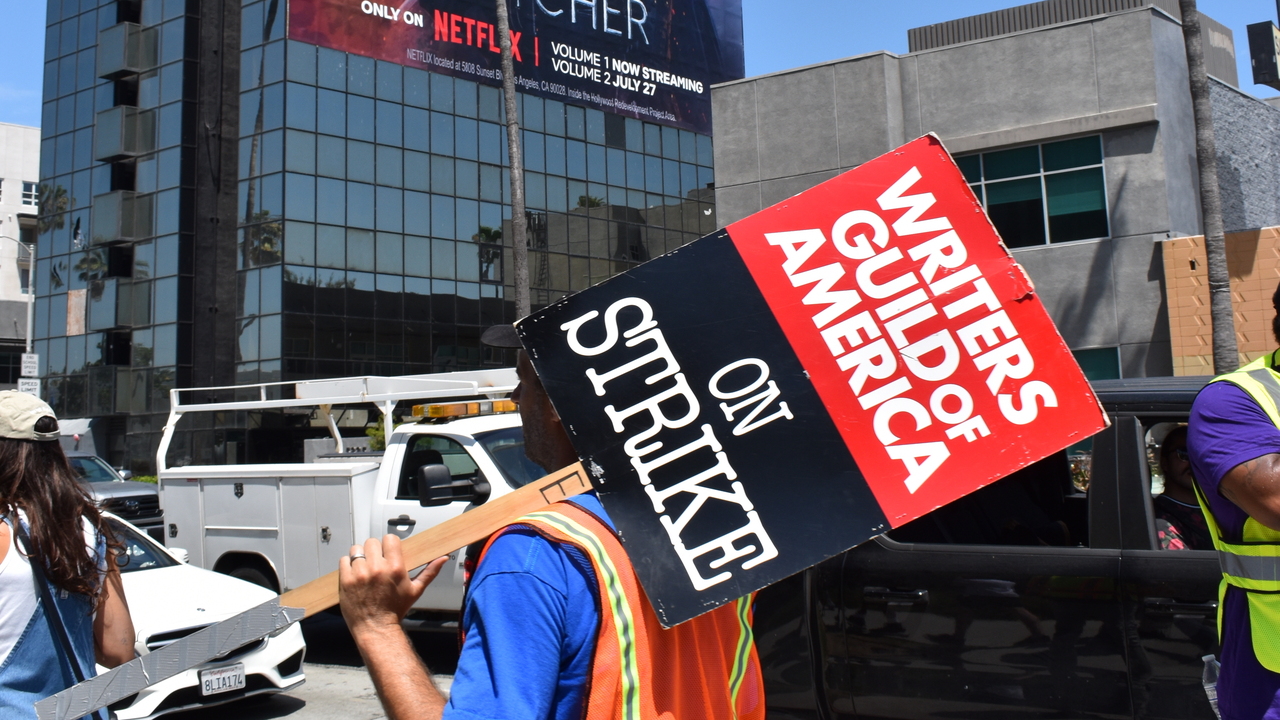Nearly 7 months after the strike began, the Writers Guild of America appears to have reached an agreement with AMPTP that includes a new 3-year contract for film and television screenwriters. The WGA represents more than 11,000 screenwriters.
The protest began on May 2 and was one of the longest in the Writers Guild’s history. Over the past decade, the streaming era has become a threat to the careers of film writers, worsening working conditions and pay levels. The broadcast networks’ standard of more than 20 episodes per season for television series has dropped to six or seven, which has resulted in reduced income for screenwriters and led them to find more jobs in a year. One of the targets of the strike was also the so-called mini rooms, an innovation of the streaming era in which only a few writers are hired to help devise a show; and the use of artificial intelligence.
The negotiations between the studios and the writers, which began more than five months ago, resumed Wednesday after a hiatus of nearly a month. Each side claimed it was the other that refused to negotiate. The tentative agreement was reached only after intense pressure to restart the negotiations from some A-List WGA members, including Ryan Murphy, Kenya Barris and Noah Hawley; and after several corporate executives joined the talks, Robert A. Iger, Disney’s chief executive; Donna Langley, chair of the NBCUniversal Studio Group; Ted Sarandos, Netflix’s co-chief executive; and David Zaslav, who runs Warner Bros.
On Saturday, lawyers for the entertainment companies proposed language – a couple of paragraphs within a contract of hundreds of pages – that addressed a concern of the corporation about A.I. and old scripts owned by the studios.
Writers Guild board members will vote Tuesday on whether to accept the agreement and end the strike. No one will be able to return to work until the negotiations are over. The agreement contains most of the demands, including increased compensation for streaming content, concessions from studios on minimum staffing for TV shows, and guarantees that artificial intelligence technology will not interfere with writers’ credits and compensation.
However, the end of the strike does not mean that Hollywood is back to work. Tens of thousands of actors are still on strike, and the only shows that could resume production anytime soon are those without actors, such as late-night programs hosted by Jimmy Fallon and Stephen Colbert and daytime talk shows hosted by Drew Barrymore and Jennifer Hudson.
Since 14 July, SAG-AFTRA has been on strike. Its demands exceed those of the Writers Guild and the studios’ alliance has decided to prioritize talks with the Writers Guild, partly because of the hard line taken by SAG-AFTRA leader Fran Drescher. The actors, among other things, want two per cent of the total revenue generated by streaming shows, something the studios have said they will not do.
The agreement with the Writers Guild could speed up negotiations with the actors’ union. Some of SAG-AFTRA’s worries are similar to those raised by the Writers Guild. Actors fear that AI could be used to create digital replicas of their likenesses (or that performances could be digitally altered) without payment or approval.
Along with the striking actors, more than 100,000 behind the scenes workers including directors, camera operators, publicists, makeup artists, prop makers, set designers, lighting technicians, hair stylists and cinematographers in Los Angeles and New York will continue to be idle, many of them with increasing economic hardship.
According to a document prepared by the plan administrators and viewed by the New York Times, Hollywood workers have taken more than $45 million in emergency withdrawals from the Motion Picture Industry Pension Plan since Sept. 1. Murphy created a financial assistance fund for inactive workers on his shows, committing $500,000 as an initial sum. Within days he received requests for $10 million.
Governor Gavin Newsom said that the Californian economy alone lost more than USD 5 billion due to the closure of Hollywood. Both strikes occurred at a difficult time for Hollywood. Moviegoers have started to return to the theaters and a long-lasting strike that interrupts new releases threatens to undermine this recovery. In addition, investors have lost patience with streaming, emphasizing the importance of profits from traditional exhibition.
Photo credit : ufcw770, CC BY 2.0 <https://creativecommons.org/licenses/by/2.0>, via Wikimedia Commons

